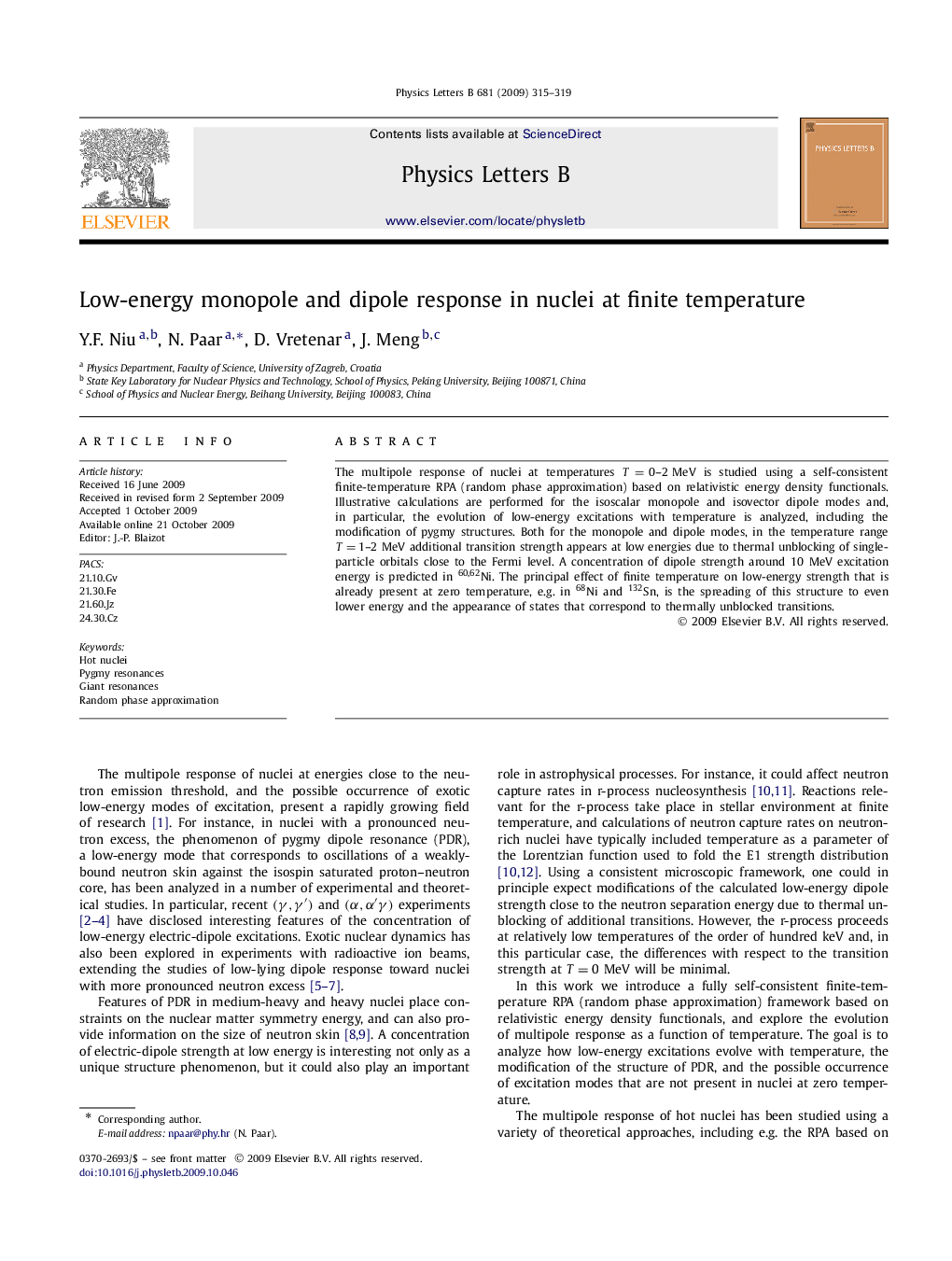| Article ID | Journal | Published Year | Pages | File Type |
|---|---|---|---|---|
| 10723697 | Physics Letters B | 2009 | 5 Pages |
Abstract
The multipole response of nuclei at temperatures T=0-2 MeV is studied using a self-consistent finite-temperature RPA (random phase approximation) based on relativistic energy density functionals. Illustrative calculations are performed for the isoscalar monopole and isovector dipole modes and, in particular, the evolution of low-energy excitations with temperature is analyzed, including the modification of pygmy structures. Both for the monopole and dipole modes, in the temperature range T=1-2 MeV additional transition strength appears at low energies due to thermal unblocking of single-particle orbitals close to the Fermi level. A concentration of dipole strength around 10 MeV excitation energy is predicted in 60,62Ni. The principal effect of finite temperature on low-energy strength that is already present at zero temperature, e.g. in 68Ni and 132Sn, is the spreading of this structure to even lower energy and the appearance of states that correspond to thermally unblocked transitions.
Related Topics
Physical Sciences and Engineering
Physics and Astronomy
Nuclear and High Energy Physics
Authors
Y.F. Niu, N. Paar, D. Vretenar, J. Meng,
